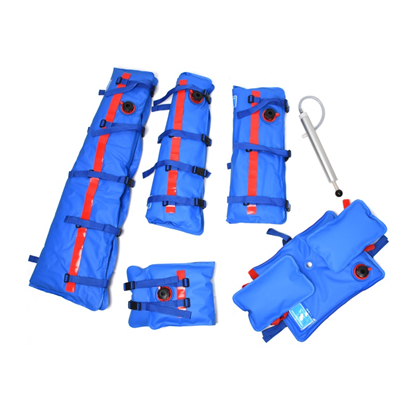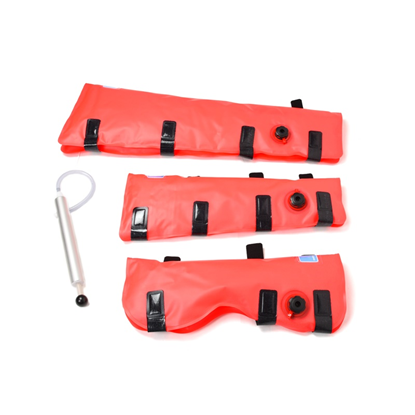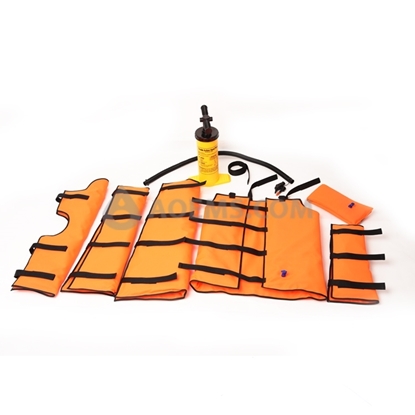Inquiry cart
Search
Vacuum Splint
Double-layer TPU Extremity Set With Multi-chamber EMS-0A00
The vacuum splint has been shown to be a simple, safe and effective method of emergency splinting of fractured extremities. The ease of application of this splint makes it especially effective for the emergency splinting of fractures in children. It is designed to allow patient immobilization in any position.
Full Body Vacuum Splint Set EMS-VSA-2
This vacuum splint set is designed to provide maximum support with minimum effort. The complete set includes three splints in different sizes and all of them are made of durable vinyl coated nylon that is supple enough to be molded around an injured extremity.
Emergency Rescue Vacuum Splint Set (EMS-A406G)
Vacuum splints set is fast, effective and versatile, and provide the best possible support with the least amount of effort. They are made with durable PVC and polyester that is supple enough to be molded around an injured extremity, yet tough enough to withstand repeated daily use.
Multi-Chamber Vacuum Splint Set EMS-A406G
Multi-Chamber-System that makes up the interior of the vacuum splints makes them ideally suited for MRI. Thin, flexible, easy to use and very stable, the patient is comfortably stabilized during the scan resulting in optimal first-time images.
It is crucial that for a quality examination, the patient must be in the absolute idle position of the joint to be scanned. Until now, this total motionlessness was very difficult for the patient to accept and maintain. The result has been the need to repeat the scanning procedures leading to an increase in the time needed for the examination.




